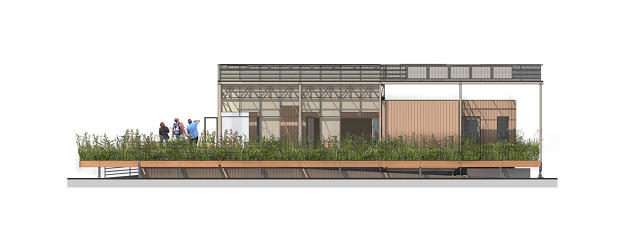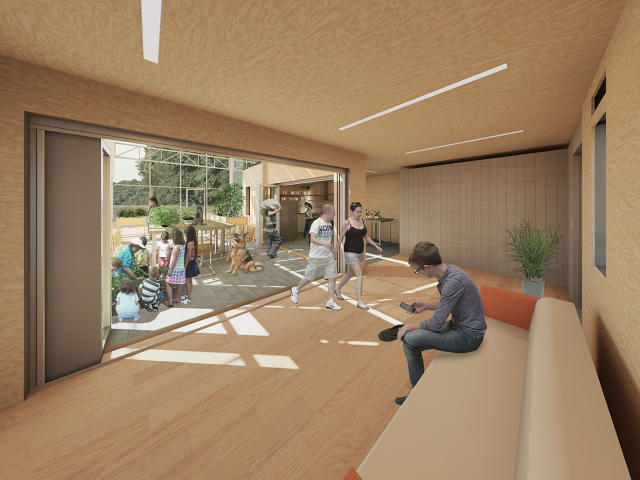students on the college of Buffalo are building an amazing house that’s fully powered by the solar.
April 10, 2015
The department of energy’s biennial sun home constructing competition, the sunlight Decathlon, rolls around once more in 2015, and the scholar groups are already showcasing their concepts ahead of the large fall showdown.
One early mission that caught our eye is an entry from the university of Buffalo, entitled develop.
develop is a conventional form of house augmented with a metal cover over-layer. the home options the GRoWlarium, a greenhouse area that shifts form with the seasons. In summer season, it can be open and ethereal and protected through huge blinds. In iciness, it shelters vegetation and acts as a heat buffer to the cold out of doors.

“The GRoWlarium is the conceptual and bodily heart of the home. It offers versatile use depending on the season,” says Christopher Osterhoudt, an MA structure scholar and grow’s common project manager.
“in the summer, two large doorways open up into the GRoWlarium, you open up the ridge vents, and it turns into one large open ground plan. that you would be able to carry out your couch and tv and your eating room, and it becomes a huge dwelling house.”
the canopy nearly mounts the sunlight panels that power the home (all Decathlon projects have to energy themselves totally from the solar) and it acts as a rack for many plants placing and stuck to the surface wall.

The Buffalo group, like the entire 20 or so finalists, has been planning its home for a long time. The bar on the sunlight Decathlon has risen step by step higher, requiring faculties to spend longer creating groups, pass-discipline partnerships, bringing in sponsors and business collaborators, and so forth. grow’s 30 college students come from its architecture, engineering, management colleges, and the honors college.
The group will ship the home to Irvine, California, in September for the finals. the principle “T” of the house breaks into two sections, so that they can go on flatbed trucks. The steel canopy will likely be assembled on-site, “stick development” model.
After the competition, Osterhoudt hopes to deliver the home back to Buffalo, big apple, and rebuild it, possibly on U.B.’s campus. to do this, the team will want to put an additional geothermal gadget beneath the inspiration. with a purpose to help minimize electrical heating costs in the wintry weather time.
after all, assembling all these ideas into a whole isn’t low cost. U.B. has spent $300,000-plus bringing develop to fruition (which seems to be something like the going fee for the Decathlon this present day). it can be most likely time for the organizers to cap excessive spending, though it can be exhausting to argue with having the very best properties conceivable.
“We exhibit all these technologies, the high-performance stuff. When people see it, they start to research from those ideas and observe it to themselves,” Osterhoudt says.
[All Images: via University of Buffalo]
(183)